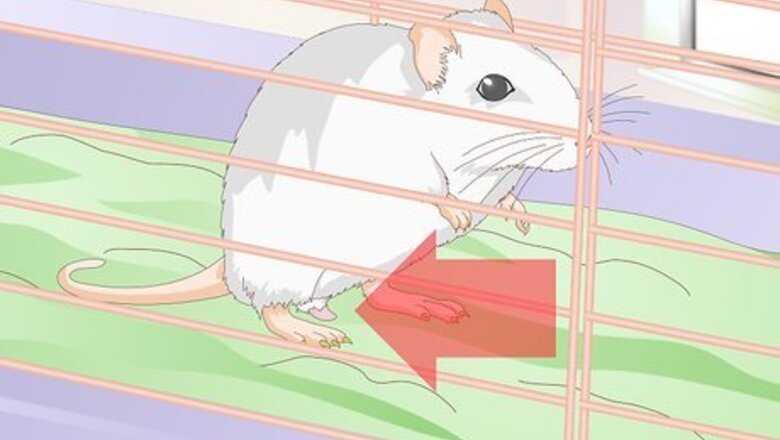
views
X
Trustworthy Source
PubMed Central
Journal archive from the U.S. National Institutes of Health
Go to source
A penile prolapse is unsightly, of course, but is also very uncomfortable for your mouse and can lead to serious health problems. The earlier you recognize and treat the prolapse, the more quickly your mouse can heal and get back to his normal activities.
Recognize Penile Prolapse on Your Mouse
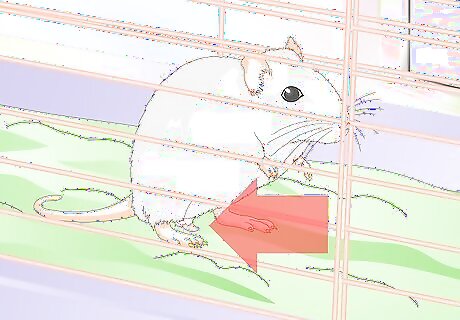
Examine your mouse’s penis and prepuce. A penile prolapse is easy to recognize. Your mouse’s penis will be outside of the prepuce and dragging along the cage floor. It will also be swollen, red, and possibly dry and bleeding. You may also see a swollen band of the prepuce behind the head of the penis. The skin of the penis will be damaged from the constant dragging. In severe cases, the penis will turn a dark red due to a prolonged lack of blood flow. A penile prolapse can be extremely painful for your mouse, so he may flinch and become very sensitive to you touching the affected area.ef> Be very gentle with your examination.
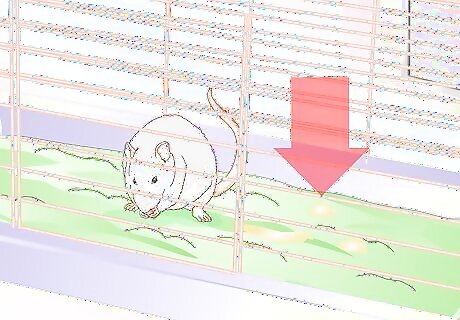
Monitor your mouse’s urination. A penile prolapse can make it difficult for your mouse to urinate. This is because the urethra, which carries urine out of the body, can become blocked with a penile prolapse. Check the cage bedding periodically to see if your mouse is urinating. You can also put a towel in his cage to see the urine more easily. An inability to urinate can lead to serious medical problems. If your mouse is not urinating, take him to your veterinarian as soon as possible.
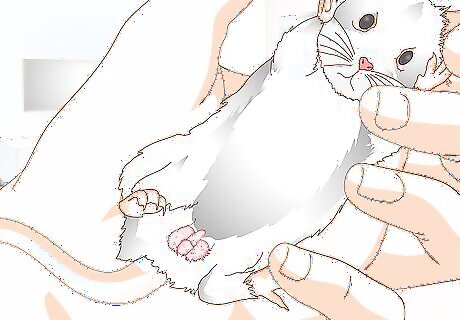
Determine the severity of the penile prolapse. If your mouse has a mild case of penile prolapse (mild inflammation, little to no pain), you can treat him at home with noninvasive treatments. More severe cases, however, will require invasive veterinary care. In severe cases of penile prolapse, the penis has become infected (yellow discharge) and significantly enlarged with fluid. Some of the penile tissue may have also died due to no blood flow. A complete lack of urination also indicates a severe case of penile prolapse. Penile prolapse becomes severe if left untreated. Early recognition can prevent the prolapse from becoming severe and requiring intensive veterinary treatment.
Treating a Mild Case of Penile Prolapse
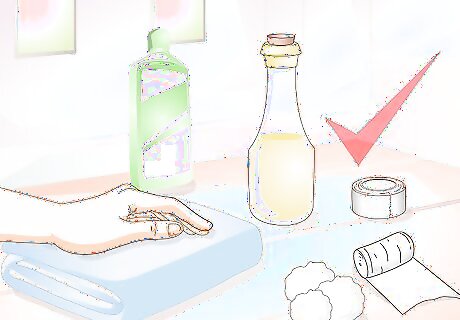
Organize your supplies. To treat your mouse’s penile prolapse at home, you will need some supplies to clean, disinfect, and treat the affected area. For cleaning, you will need a handful of sterile 2 x 2 gauze or cotton balls, as well as some warm water and mild soap. Instead of soap and water, you can use saline as a cleaning agent. Purchase chlorhexidine to disinfect your mouse's penis and prepuce. If it is not available at your local pharmacy, ask your veterinarian for recommendations on other disinfectant solutions. Have a few clean towels on hand to keep the treatment area clean and dry. To reduce the swelling, make a small icepack (ice in a plastic bag) or put a small amount of granulated white sugar in a bowl. You will also need some oil (e.g., olive, vegetable, canola) to lubricate the penis and keep it from drying out. If the prolapsed area looks infected, you will need some human triple antibiotic ointment, which is available at your local pharmacy.
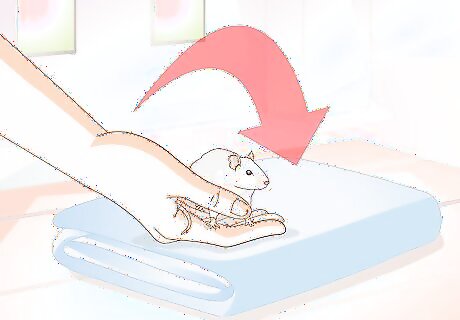
Place your mouse in the treatment area. To get your mouse out of his cage, gently grasp the base of his tail and let him walk into your cupped hand in the bottom of his cage. You can let go of his tail when he is comfortably settled into your hand. When you grasp his tail, make sure he is not holding onto anything—his tight grip could cause you to injure him by pulling the skin off his tail. You definitely do not want to make him feel any more pain of discomfort! Place him gently on a clean towel.
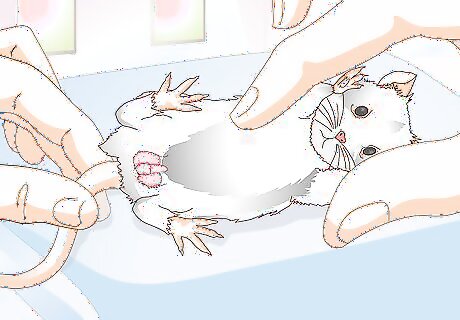
Turn your mouse on his back. It will be easier to access your mouse’s penis by placing him on his back. To put him on his back, hold the base of his tail in your dominant hand and place your thumb and index finger of your non-dominant hand just behind your mouse’s front legs. Gently squeeze together the skin behind his ears to scruff him and turn him on his back. If you are right-handed, you will scruff him with your left hand. When you have him his back, tuck his tail between your fingers to keep it out of the way.
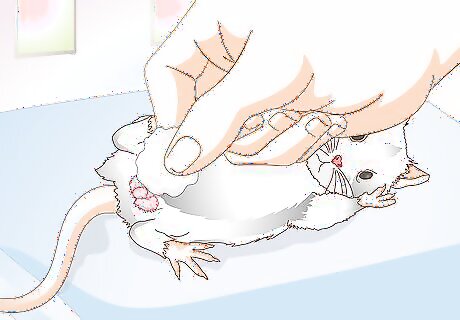
Clean and disinfect your mouse’s penis and prepuce. Dampen some gauze or cotton balls with your cleaning solution of choice and gently clean your mouse’s penis. Be careful to remove any debris that may have gotten stuck on the penis. When you have finished cleaning, pat the area dry with another piece of gauze or a clean towel. Be extra careful around areas of damaged skin (cuts, bite wounds). Patting the area dry with a cotton ball may not be a good idea, since the fibers of a dry cotton ball could get stuck on the skin. Apply some chlorhexidine (or other recommended disinfectant solution) with another piece of gauze or some cotton balls, and pat dry again. You may need to treat the penis for several days with a disinfectant and antibiotic ointment to adequately treat the inflammation. Your veterinarian can provide you with guidance on how long to treat.
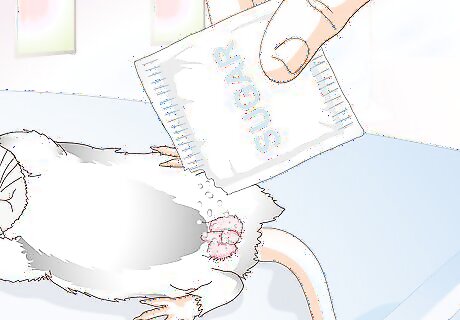
Reduce the swelling. If the penis is swollen, you will need to reduce the swelling so the penis can slide back more easily into the prepuce. One way to reduce the swelling is to sprinkle some granulated sugar on the penis and surrounding area. The sugar pulls in the fluid from the prepuce and penis, thus reducing the swelling in both structures. The effect of the sugar may not be immediate, so be patient as the swelling goes down. You can also apply a small, wrapped ice pack to your mouse’s penis to reduce the swelling. Apply the ice pack in short intervals to prevent your mouse from getting too cold.
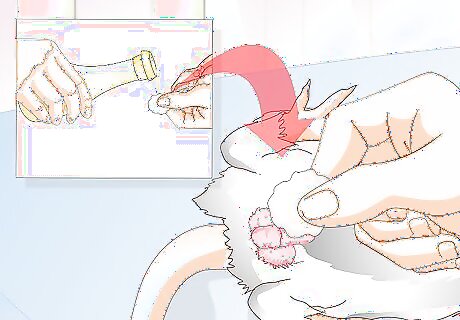
Lubricate the penis. Putting oil on your mouse’s penis could get a little messy, so apply the oil with some gauze or cotton balls. The lubrication will make it easier for you to manually reinsert the penis back into the prepuce. You do not have to use a lot of oil.
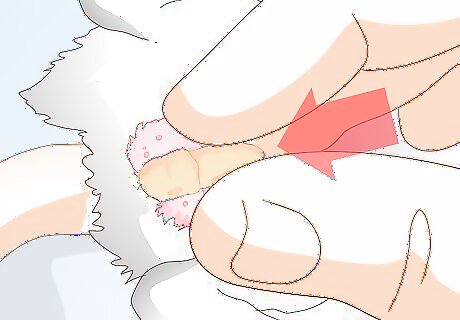
Reinsert the penis. With the penis sufficiently lubricated, pull it out a little bit further (if possible) and lubricate the shaft of the penis. With your thumb and index finger, gently push the penis back down into the prepuce. Contact your veterinarian if you are not successful with reinserting the penis. Depending on how much pain your mouse is in, he may not let you do this.
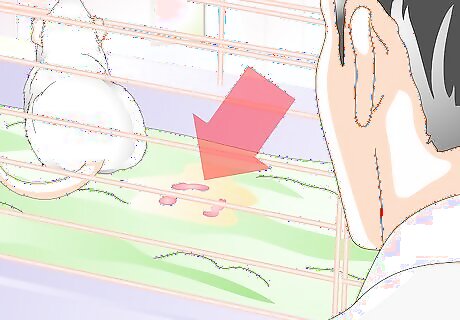
Monitor your mouse. If you were able to reinsert the penis, observe your mouse to see how well he is recovering. Watch to see if the penis prolapses again, and take note of any bleeding or discharge you see from the penis or prepuce. Continue to monitor your mouse’s urination, and look for blood in the urine. Take your mouse to the veterinarian if your mouse is showing any signs of illness or discomfort following your treatment.
Treating Severe Penile Prolapse
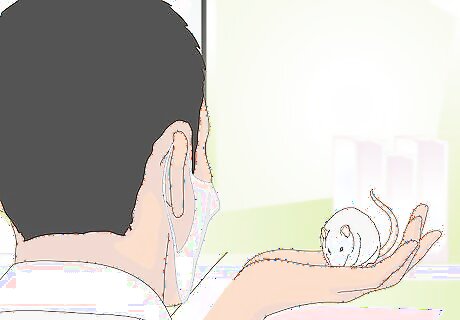
Take your mouse to your veterinarian. If your mouse has a severe case of penile prolapse, or your treatment attempt was not successful, he will need further treatment by your veterinarian. One treatment method your veterinarian may want to use is the puncture technique, during which he or she would use a hypodermic needle to create tiny puncture holes in the prepuce to release the fluid causing the swelling. Your veterinarian may also inject a substance called hyaluronidase to further reduce the swelling. The puncture technique requires anesthesia.
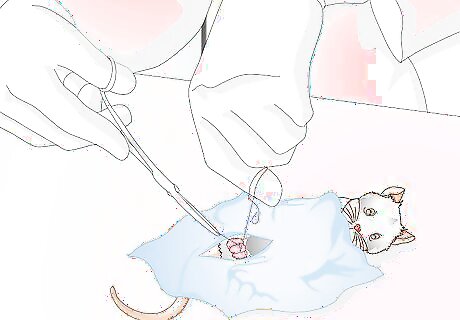
Allow your veterinarian to perform surgery on your mouse. If your mouse’s case of penile prolapse is particularly extreme, or the penile prolapse keeps occuring, your veterinarian may recommend surgery to enlarge the opening of the prepuce. With your mouse under anesthesia, your veterinarian would apply a local anesthetic to the surgical area before enlarging the opening. Surgery is not without risk and may be expensive. Talk with your veterinarian to decide if surgery is a practical treatment option for your mouse.
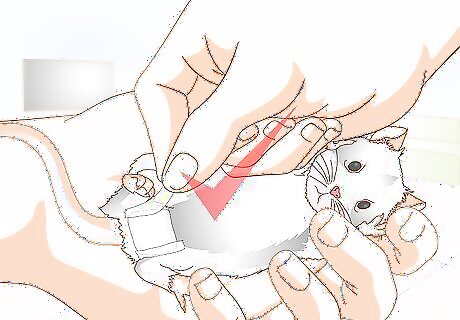
Take care of your mouse at home. After your mouse has gone through intensive veterinary care, you will need to take good care of him at home. For example, you will need to keep the surgical area clean—your veterinarian can provide you with instructions on how to do this. In addition, put clean white towels in his cage where he can lie without the risk of getting bedding near the incision site. The white towels can also let you know if your mouse is urinating. Take your mouse to back to your veterinarian if the penis has prolapsed again, or you notice that the surgical area is bleeding or looking infected.















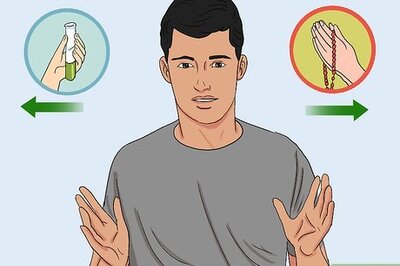
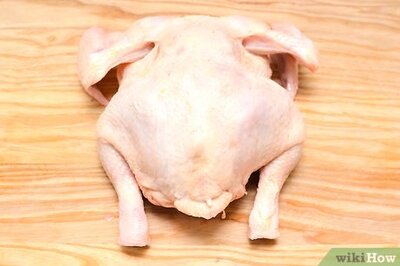

Comments
0 comment